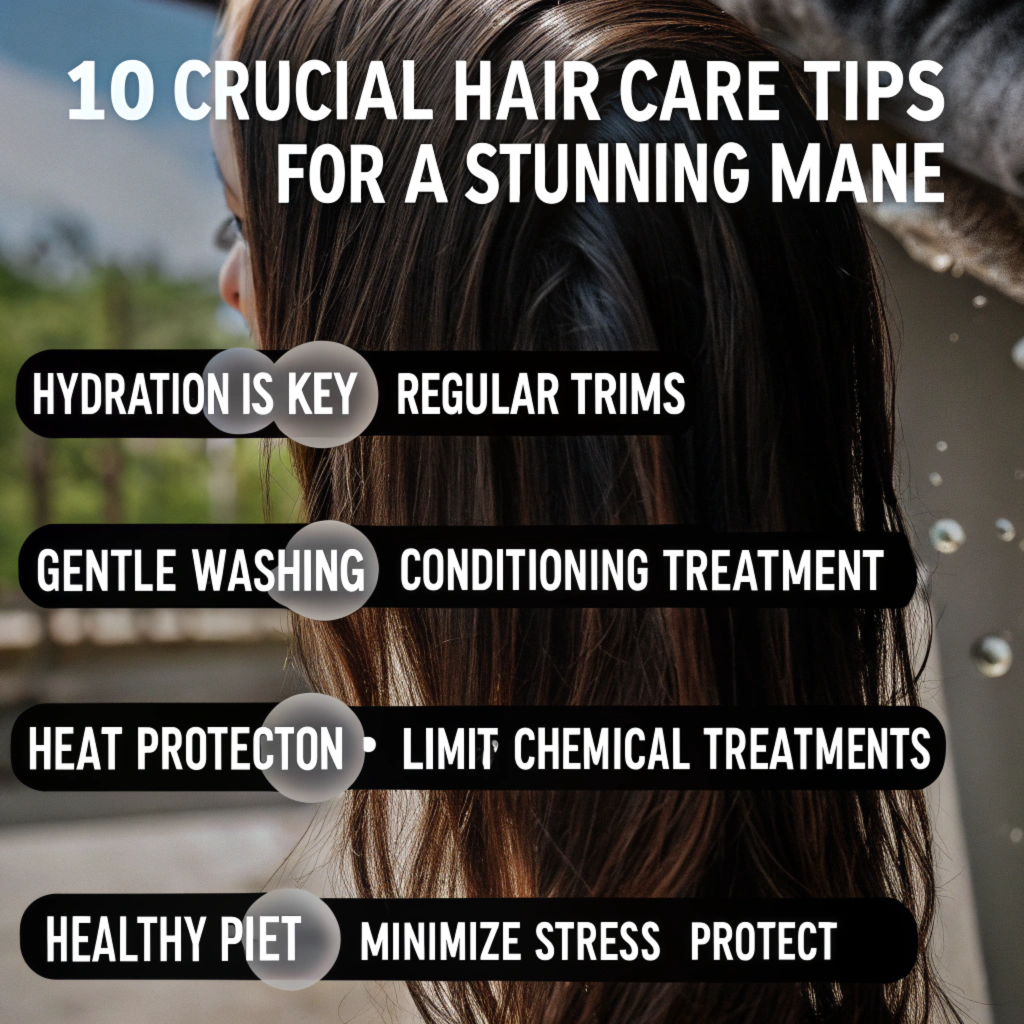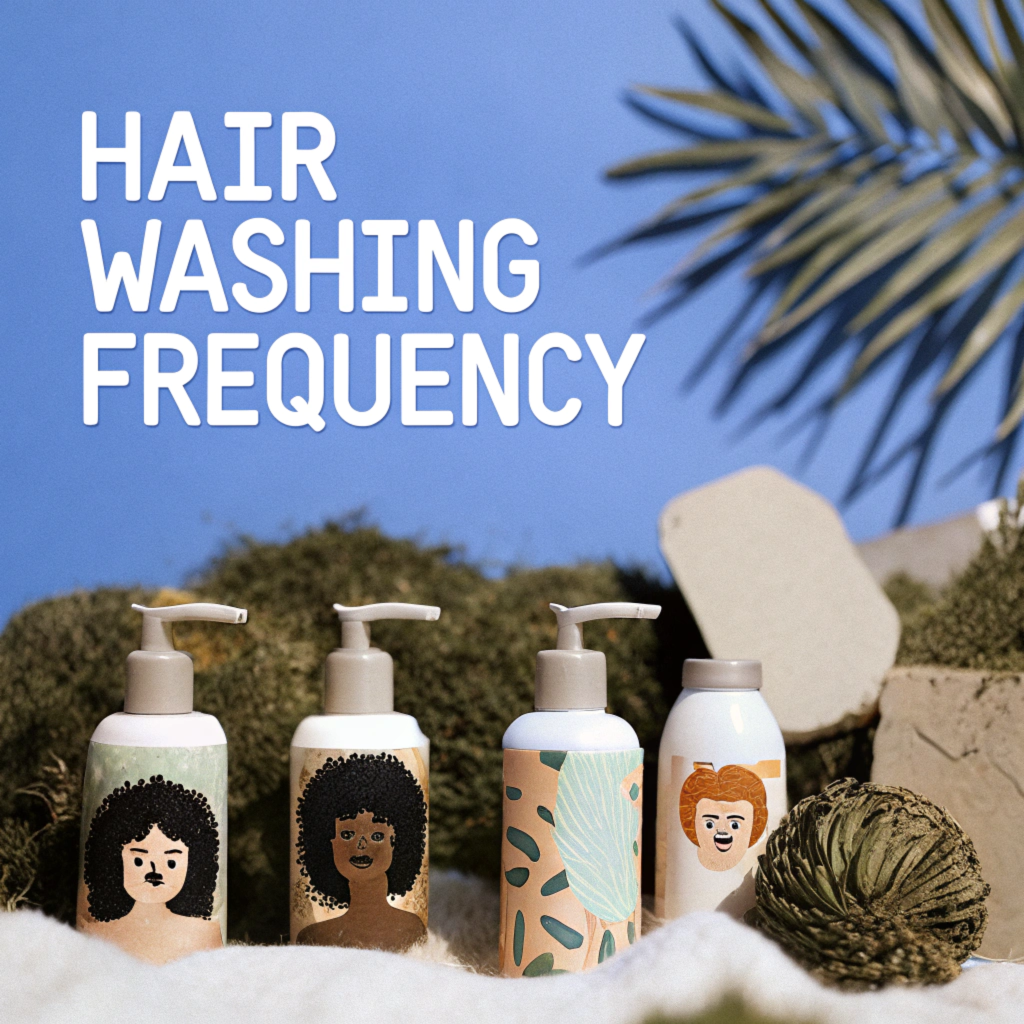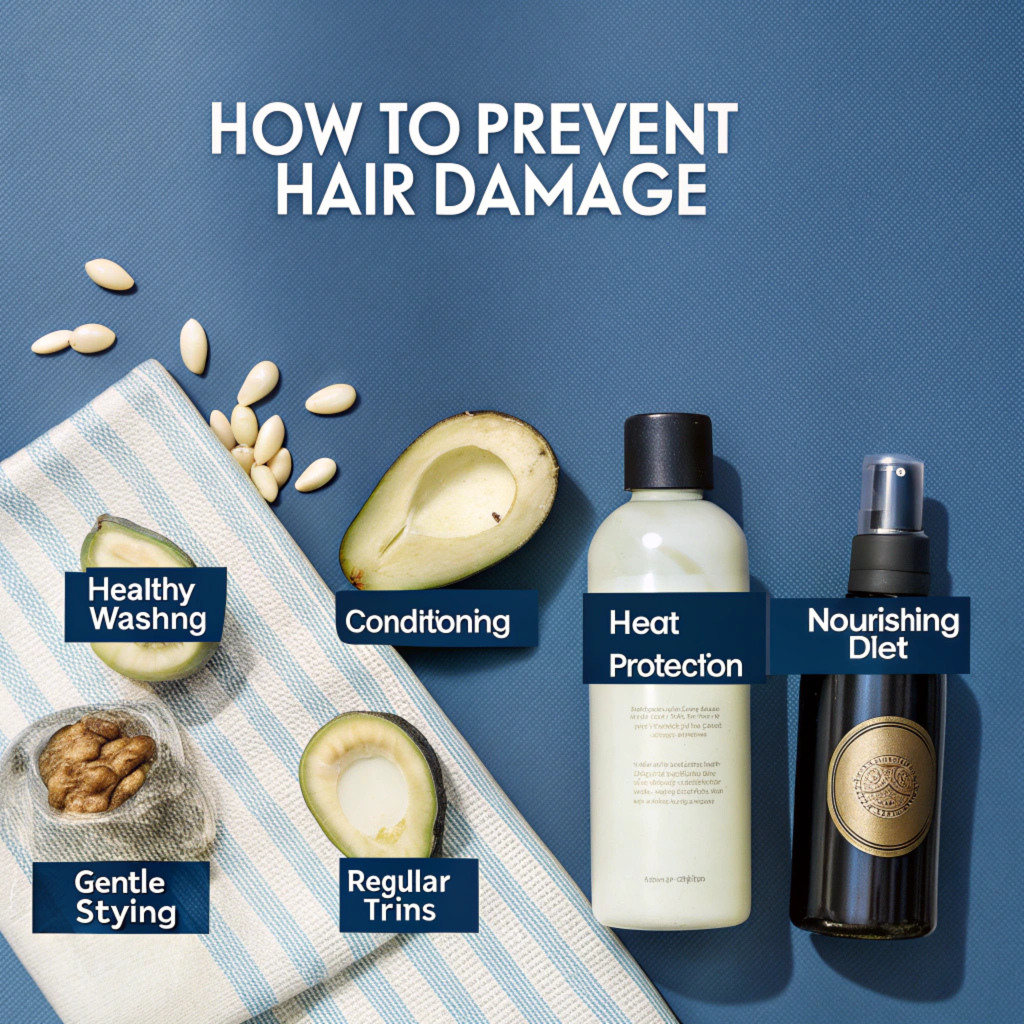
Achieving and maintaining a stunning mane requires a combination of knowledge, care, and the right products tailored to your unique hair type. In a world where hair is often seen as a reflection of personal style and health, understanding the fundamentals of hair care becomes essential. Whether you have straight, wavy, curly, or coily hair, each texture has its own set of needs that must be addressed for optimal health and beauty. In this article, we will explore ten crucial hair care tips that can transform your locks from lackluster to luminous. From the importance of choosing the right shampoo and conditioner to the benefits of regular trims and proper styling techniques, these tips are designed to empower you with the knowledge necessary for nurturing your hair effectively. By adopting a consistent hair care routine, you can enhance your hair’s natural beauty, promote growth, and reduce damage, ultimately leading to a beautiful, vibrant mane that turns heads. Join us as we delve into the essential practices that will help you unlock your hair’s full potential and elevate your overall look with confidence. Whether you’re seeking to revitalize your routine or embark on a new hair journey, these strategies will guide you to stunning hair.

The Best Hair Care Routine
Start by choosing the right shampoo and conditioner for your hair type dry, oily, wavy, or straight. Look for sulfate-free formulas that nourish and hydrate without stripping essential oils. When washing your hair, massage the shampoo into your scalp to stimulate circulation and remove buildup, while applying conditioner primarily to the mid-lengths and ends to avoid weighing down the roots. If you wash your hair frequently, consider incorporating a cleansing conditioner or co-wash to maintain moisture and reduce damage.
Incorporate a deep conditioning treatment or hair mask into your routine once a week to restore hydration and repair any damage. After washing, gently towel-dry your hair without rubbing, as wet hair is more vulnerable to breakage. Use a wide-tooth comb to detangle, starting from the ends and working your way up. For styling, minimize the use of heat tools, and always apply a heat protectant if you do. Finally, get regular trims every 6-8 weeks to keep split ends at bay and maintain overall health and shine.
How Often Should You Wash Your Hair
Consider your scalp type and lifestyle when determining how often to wash your hair. If you have an oily scalp or engage in activities that cause heavy sweating, washing your hair every day or every other day might be necessary to keep it clean and fresh. However, if your scalp is dry or you have textured hair, washing once a week or even every ten days can help retain natural oils and moisture, preventing over-drying and damage. Pay attention to your hair’s response; if it feels greasy or weighed down, increase your washing frequency, but if it feels dry or frizzy, try extending the time between washes.
To maintain a healthy balance, consider using dry shampoo in between washes to absorb excess oil and add volume. This can help you prolong the time between washes without sacrificing cleanliness. Always listen to your hair and adjust your routine as needed, incorporating the right products to support your unique hair type while keeping it vibrant and manageable.

How to Prevent Hair Damage
Minimize heat exposure by identifying alternative styling methods. Whenever possible, let your hair air-dry after washing instead of reaching for that blow dryer. When styling, use the lowest heat setting on tools like curling irons or flat irons, and always apply a heat protectant spray beforehand. Additionally, limit the use of heat styling tools to once or twice a week to give your hair a chance to recover from potential damage.
Incorporate regular trims into your routine, as even small adjustments can eliminate split ends and prevent further breakage. Aim for a trim every six to eight weeks to keep your hair looking healthy and fresh. Opt for gentle hair accessories, avoiding elastics that can tug and pull at your strands. Soft scrunchies or clips can help reduce stress on your hair and minimize breakage, ensuring your locks remain resilient and beautiful.
Nourishing Hair Care Steps
To maintain healthy and vibrant hair, it is essential to establish a nourishing hair care routine. Start by choosing a sulfate-free shampoo that cleanses without stripping your hair of its natural oils. Follow up with a rich conditioner tailored to your hair type, applying it primarily to the mid-lengths and ends to ensure hydration where it’s most needed. Once a week, treat your strands to a deep conditioning mask or oil treatment, allowing it to penetrate the hair shaft for maximum moisture and nourishment.
In addition to regular washing, consider incorporating leave-in conditioners or serums to provide ongoing hydration and protection. These products help to smooth frizz and maintain shine throughout the day. Pay attention to your diet as well; a balanced intake of vitamins and minerals, particularly biotin, omega-3 fatty acids, and antioxidants, can significantly contribute to hair health. Finally, remember to hydrate from the inside out by drinking plenty of water, which supports overall hair vitality.
Choosing the Right Hair Products
Selecting the appropriate hair products is crucial for achieving and maintaining your desired look. Begin by assessing your hair type and any specific concerns, such as dryness, frizz, or color treatment. For example, if you have curly hair, opt for products designed to enhance and define curls, typically enriched with moisturizing ingredients like shea butter or coconut oil. If your hair is fine and prone to oiliness, lighter formulations that provide volume without weighing it down are ideal. Always check the ingredient list to avoid harsh chemicals that can damage your hair over time.
Once you have identified the right products, consider the goals of your hair care routine. Whether you’re aiming for increased shine, enhanced volume, or protection from heat styling, choose products that align with those objectives. Experimentation may be necessary to find the perfect combination, so don’t hesitate to try samples or smaller sizes before committing to full-size products. Keep in mind that consistency is key; using the right products regularly will yield the best results, allowing your hair to flourish and shine.
Natural Treatments for Common Hair Problems
For addressing common hair issues, a variety of natural treatments can be both effective and easy to implement. For instance, if you struggle with dryness, consider applying a simple mask made from mashed avocado mixed with olive oil. Apply this mixture to your hair, focusing on the ends, and leave it on for about 30 minutes before washing it out with a gentle shampoo. This treatment not only hydrates but also provides essential nutrients, leaving your hair soft and manageable.
To combat dandruff, a blend of equal parts apple cider vinegar and water can do wonders. After shampooing, use this mixture as a rinse, allowing it to sit on your scalp for a few minutes before rinsing thoroughly. The acidity of the vinegar helps restore the scalp’s pH balance and can reduce flakiness. Additionally, incorporating a few drops of tea tree oil into your regular shampoo can harness its antifungal properties, tackling stubborn dandruff effectively while promoting a healthy scalp.
How to Choose the Perfect Haircut
Consider your face shape and personal style when selecting a haircut to ensure it complements your features. For instance, individuals with round faces may benefit from hairstyles that add height and elongate the appearance of the face, such as layered cuts or long bobs. Conversely, those with square faces might opt for softer styles that can round off the jawline, such as soft waves or side-swept bangs. It’s also essential to think about your lifestyle and how much time you want to dedicate to styling. A low-maintenance cut can save time in your routine, while a more detailed style may require daily effort.
Consult with a professional stylist to gain insights about what will work best for your hair type and texture. Bring along inspiration photos that reflect the look you desire, but be open to suggestions based on your hair’s natural behavior and growth patterns. A skilled stylist can help tailor a haircut that not only aligns with your aesthetic but also enhances your hair’s inherent qualities, ensuring you leave the salon feeling confident and satisfied.

Tips to Maintain Stylish Hair
Regular trimming is essential to keep your hair looking fresh and stylish. Aim for a trim every six to eight weeks to eliminate split ends and maintain the shape of your hairstyle. This will not only enhance the overall appearance but also promote healthier hair growth. Additionally, invest in high-quality hair products suitable for your hair type. Shampoos and conditioners formulated for your specific texture—be it curly, straight, or wavy—can make a significant difference. Incorporate weekly deep conditioning treatments or hair masks to nourish and hydrate your hair, keeping it soft and manageable.
Another crucial aspect of maintaining stylish hair is protecting it from environmental stressors and heat damage. When using heat styling tools, always apply a heat protectant spray to shield your hair from damage. On days when you want to give your hair a break, consider opting for protective styles like braids or buns that can help prevent breakage. Finally, pay attention to your diet; a balanced intake of vitamins and minerals can boost hair health from the inside out, ensuring your mane remains vibrant and full of life.
How to Style Hair Effortlessly
To achieve an effortlessly styled look, start by embracing your hair’s natural texture. Use a lightweight mousse or sea salt spray on damp hair to enhance waves or curls without weighing them down. Once your hair is dry, use a few fingers to tousle and separate strands for a relaxed, lived-in appearance. For those with straight hair, a simple mid-ponytail or loose braid can convey a chic yet effortless vibe; just pull a few strands out around your face for softness.
Another quick styling option is to create a messy bun. Gather your hair into a high or low ponytail, then twist the hair loosely around the base and secure it with a scrunchie or a few bobby pins. Don’t worry about perfection—letting some pieces fall naturally will add to the casual charm. To finish off your look, use a light-hold hairspray to keep everything in place without sacrificing that effortless feel. By incorporating these easy techniques, you can achieve stylish hair in no time.
How to Maintain a New Haircut
To keep your new haircut looking fresh, regular trims are essential. Schedule a visit to your hairstylist every six to eight weeks to maintain the shape and remove any split ends. This is particularly important for styles that require precision, such as bobs or layered cuts. Additionally, invest in the right hair products tailored to your hair type. A sulfate-free shampoo and nourishing conditioner can help preserve your haircut while keeping your hair healthy and vibrant.
Incorporating a few simple styling techniques can enhance your new look as well. Use a heat protectant before styling tools to prevent damage and maintain the integrity of your haircut. Try to limit the use of heat tools by exploring alternative styles, like air-drying or using braids to create waves. Lastly, protect your hair from environmental factors such as sun, wind, and chlorine by wearing a hat or using protective sprays, ensuring your haircut remains as stunning as the day you left the salon.
In conclusion, achieving a stunning mane requires dedication and the right techniques. By following these 10 crucial hair care tips, you can nourish and protect your hair, allowing it to shine and thrive. Remember to choose the right products for your hair type, maintain a consistent washing and conditioning routine, and don’t forget the importance of regular trims and heat protection. With a little patience and care, you’ll be well on your way to flaunting hair that not only looks beautiful but also feels healthy. So, take these tips to heart and embrace the journey to your best hair yet!
FAQ
Sure! Here are five questions on the topic of 10 Crucial Hair Care Tips for a Stunning Mane:
- What are the best ingredients to look for in hair care products?
- How often should I wash my hair for optimal health?
- What role does diet play in maintaining healthy hair?
- How can I prevent heat damage when styling my hair?
- What are effective ways to manage split ends and promote hair growth?
What are the top ingredients to look for in shampoos and conditioners to maintain healthy and shiny hair?
To maintain healthy and shiny hair, look for shampoos and conditioners containing ingredients like:
- Argan Oil: Provides moisture and shine.
- Keratin: Strengthens and repairs hair.
- Aloe Vera: Soothes the scalp and adds hydration.
- Coconut Oil: Nourishes and reduces frizz.
- Shea Butter: Deeply moisturizes and softens.
- Vitamin E: Promotes shine and protects against damage.
- Biotin: Supports hair growth and thickness.
- Panthenol (Vitamin B5): Improves moisture retention and manageability.
These ingredients help enhance hair health, shine, and overall appearance.
How often should you wash your hair to prevent damage while ensuring it stays clean and vibrant?
To prevent damage while keeping hair clean and vibrant, wash it 2-3 times a week for most hair types. This frequency helps maintain natural oils, preventing dryness and brittleness. If you have oily hair, you may need to wash more frequently, while dry or textured hair typically benefits from less frequent washing. Use a gentle, sulfate-free shampoo and conditioner to minimize damage. Additionally, consider incorporating dry shampoo between washes for added freshness without over-washing. Tailor your routine to your hair’s specific needs for the best results.
What role does diet play in the health of your hair, and which nutrients are essential for promoting a stunning mane?
Diet significantly impacts hair health, as hair requires specific nutrients for growth and strength. Essential nutrients include proteins (like keratin), omega-3 fatty acids, vitamins A, C, D, E, biotin, iron, zinc, and antioxidants. Protein fuels hair structure, while omega-3s promote scalp health. Vitamins A and C support sebum production and collagen synthesis, respectively. Biotin aids in hair growth, and iron ensures proper oxygen supply to hair follicles. A balanced diet rich in these nutrients helps maintain a stunning mane, reducing hair loss and promoting shine.
How can heat styling tools be used safely to minimize damage and maintain the integrity of your hair?
To use heat styling tools safely, always apply a heat protectant spray or serum to your hair before styling. Set tools to the lowest effective temperature, ideally below 350°F (175°C). Limit use to 2-3 times a week, allowing hair to rest. Use tools on dry hair to prevent moisture loss and damage. Incorporate regular deep conditioning treatments to keep hair moisturized. Avoid overlapping sections of hair when styling, and always allow tools to cool down completely before storing. Lastly, consider using alternatives like air-drying or heatless styling methods to give your hair a break from heat.
What are some effective methods for protecting your hair from environmental factors such as sun exposure and pollution?
To protect your hair from sun exposure and pollution, consider wearing a wide-brimmed hat or scarf when outdoors. Use hair products with UV protection and antioxidant ingredients to shield your strands. Regularly apply leave-in conditioners or hair oils to maintain moisture. Rinse hair after swimming in chlorinated pools and wash it frequently to remove pollutants. Limit heat styling and opt for protective hairstyles. Additionally, consider dietary supplements rich in vitamins, such as biotin and omega-3 fatty acids, to support overall hair health. Regular trims help prevent split ends caused by environmental damage.
